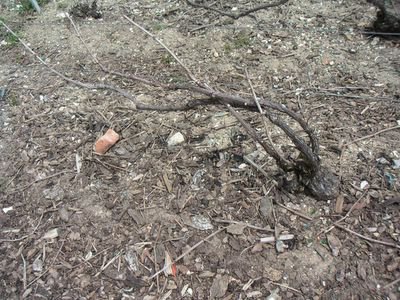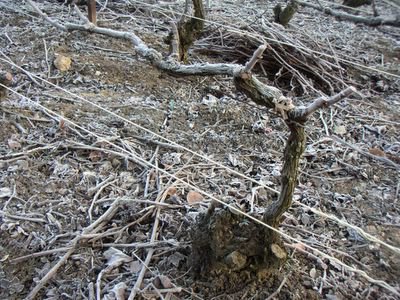All thursday we are taught the theoretical part of the cordon de royat, which is the name of the one method, approved in all classifications of vines (the other one - chablis-method - we learned last time).
It is not a system, we personallly use any more. Alain has repruned his autres crus Pinot Meunier from the cordon to the more simple and therefore faster vallée de la Marne.

The Chablis-method.

The Cordon de Royat-method.

The Vallée de la Marne-method.
We spend quite some time to answer written questions individually though in a less restrictive way, than the final exam, I presume. The questions are like this:
In reality this reminds me quite a bit of passing the theoretical part of a driver's license. You get a bunch of questions which you must answer in a certain way, that you have to learn by heart, if you want to pass.
I got almost relieved as I saw these written questions. Not that they are easy. But it should be possible to learn. The whole perspective worsened a bit as Stéphanie, our teacher, afterwards handed out the form, that the grand jury will use to give points and eliminate participants at the final, big test.
The practical part
Item after item, the form lists the skills that are in demand and the mistakes that will eliminate you straight away.
We will be tested in our understanding of the pruning itself, our carefullness during the pruning, our manouevering of the secateur, our speed and finally our attachment of the vine. The following points mean instant goodbye:
Wordblind or non-skilled scissorhands
An elderly guy in the group apparently can neither read nor write. But he may easily be a great vineyard worker. Since he obviously needs the paper, he will have to fight his way through anyway.
It is nice to see our teacher help him without making too much fuss about it. Nice to hear, that she straight away offered to record the necessary theory for him on tapes.
I think, I will send a thought or two to this bloke, when I get even more difficult times during these next and almost entirely practical Thursdays. He may get the same idea as he will see me (mis)handle the secateur. Well, he is welcome to it then.
På dansk
Copyright: The copyright for text and photos at bobler.blogspot.com belongs to Solveig Tange. You may use my articles, photos or parts of them for non-commercial use and if I am credited as the author. Feel free to link to this site but not in your own frameset please.
No comments:
Post a Comment